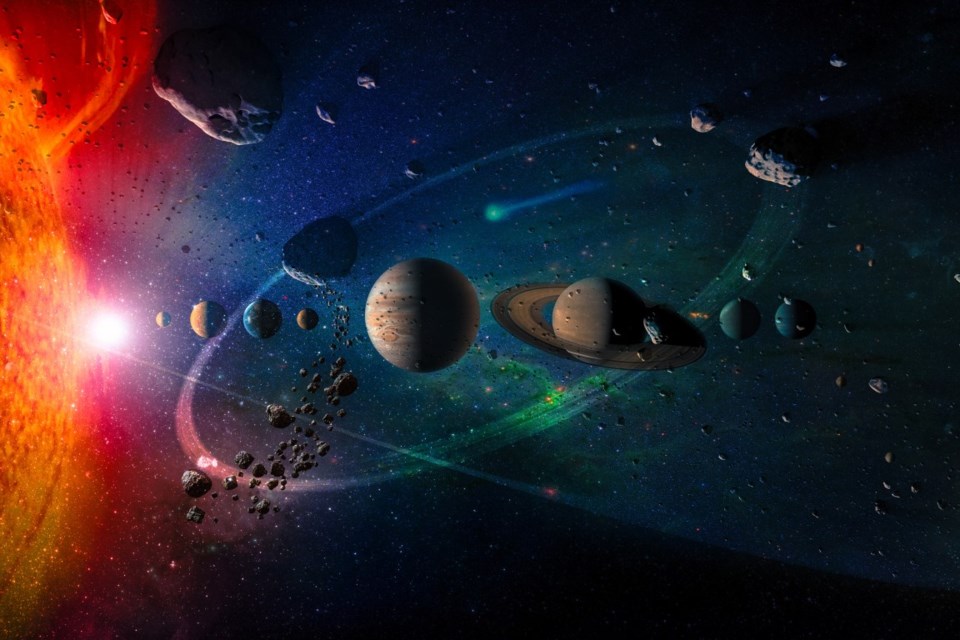The moon starts out nearly new, with little activity to report until July 13, when it is close to Earth in its orbit (perigee of 357, 264 kilometres), coupled with the full moon, makes for high tides in coastal waters. This full moon is the largest apparition in 2022. July 15, Saturn is four degrees north; July 17, Neptune is three degrees north; then the next day, Jupiter is two degrees north—a busy time as the moon drifts eastward across the night sky.
On a clear night around July 19, with a southern vista, an observer could view seven of the Solar System’s eight planets, plus the moon — Mercury will be in front of the sun. July morning of July 21, Mars is occulted by the moon for viewers on the western Pacific Rim, across the North Pole, over to Greenland. For the rest of us, Mars is 1.1 degrees south of the moon. And, that evening, Uranus is occulted for viewers in the Atlantic Ocean and in a big sweep across central Europe and Asia. July 26, Venus is four degrees south of the moon, and two days following, the moon is new again, a little over 29 days later, as expected.
Mercury won’t be visible all month — too close to the sun.
Venus remains a bright beacon in the morning sky, but gradually becoming dimmer as it heads toward the backside of the sun. The moon is four degrees north of Venus July 26.
Mars is gradually climbing along the ecliptic, and getting increasingly brighter. The waning gibbous moon is close by July 21, occulted for viewers in the extreme north.
Jupiter rises in the east around midnight, spending the month in the constellation Cetus, the Whale. The waning gibbous moon passes by on the morning of July 19. Toward the end of the month, Jupiter appears to stand still against the starry background, then begins a four-month retrograde motion, apparently moving westward. But remember it’s the Earth moving faster than Jupiter that causes this confounding “movement.”
Saturn reaches opposition in mid-July, meaning it is opposite in the sky from the sun, and would be directly south at or near midnight. The waning gibbous moon passes by July 15.
Uranus is occulted by the waning crescent moon on July 21 for viewers in Eurasia.
Neptune is a telescopic target throughout the night, slowly moving eastward among the stars of Pisces, the Fish.
On July 29, the south delta Aquariid meteors peak.
James Edgar has had an interest in the night sky all his life. He joined the Royal Astronomical Society of Canada in 2000, was national president for two terms, is now the editor of Observer’s Handbook, and production manager of the bi-monthly RASC Journal. The IAU named asteroid 1995 XC5 “(22421) Jamesedgar” in his honour and in 2021 he was awarded a Fellowship of the RASC.




